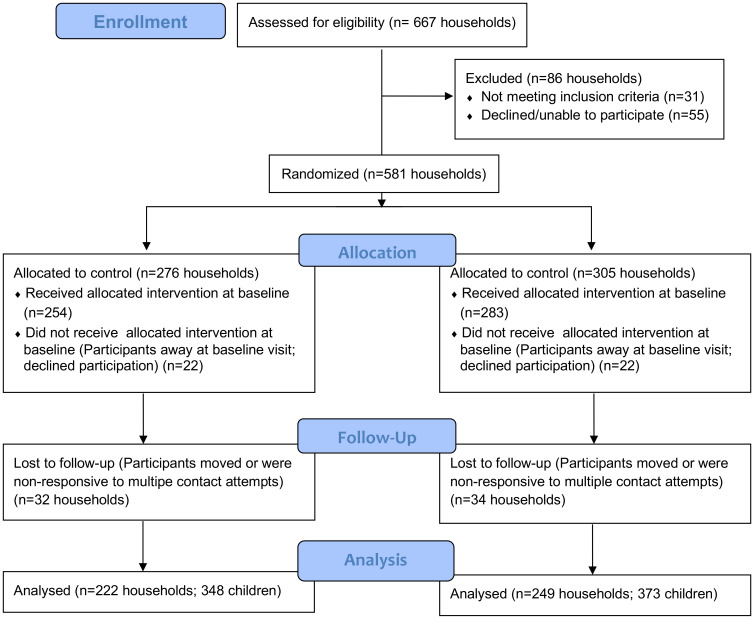Fig. 1.
Consort diagram of study participation. Of the 667 households assessed for eligibility, 31 were excluded as not meeting the criteria of having a child <3 y of age and keeping chickens, and 55 declined participation. Households were then randomly allocated by computer to either the treatment arm of the study (vaccination of chickens against NDV plus parasite control) or the control arm (parasite control only). Households not present at baseline or that declined at baseline were excluded from the study, resulting in 254 treatment households and 283 control households entering the study. Households that did not participate in any subsequent quarters after three contact attempts were excluded from analysis, resulting in 222 treatment households with 348 children and 249 control households with 373 children for analysis. All households received the intervention (NDV vaccination and parasite control or parasite control alone) every quarter. Households that were assessed for child diet and growth on all quarterly visits and on multiple but not all quarterly visits were retained in the study (SI Appendix, Fig. S1, Supplementary Text S1, and Table S1). The procedures used to detect and control for any bias in intermittent participation are detailed in Materials and Methods and in SI Appendix, Supplementary Text S1 and Tables S2 and S3.

